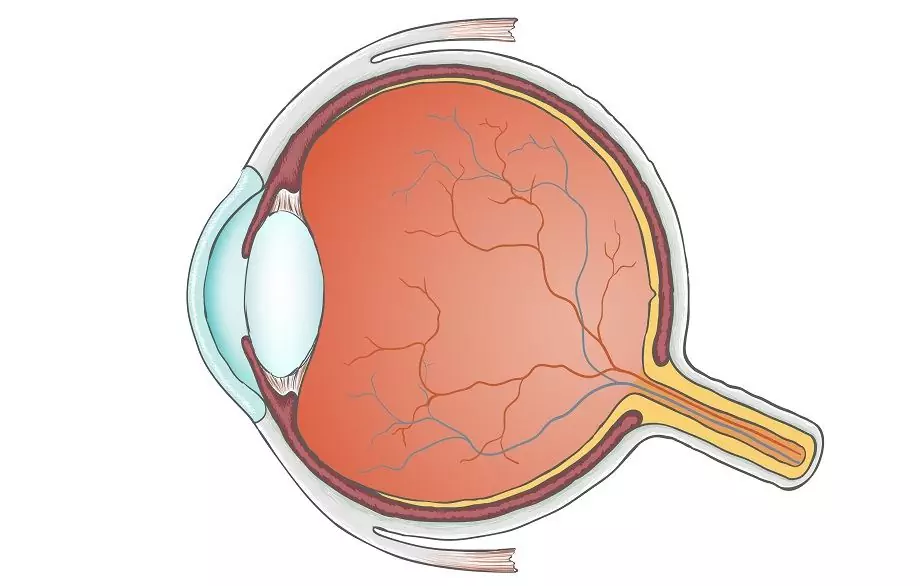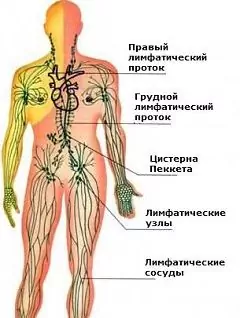Nervous system
The nervous system controls the activity of all systems and organs and provides a connection between the body and the external environment.

The structure of the nervous system
The structural unit of the nervous system is a neuron - a nerve cell with processes. In general, the structure of the nervous system is a collection of neurons that are in constant contact with each other using special mechanisms - synapses. The following types of neurons differ in function and structure:
- Sensitive or receptor;
- Effector - motor neurons that send impulses to the executive organs (effectors);
- Locking or insertion (conductor).
Conventionally, the structure of the nervous system can be divided into two large sections - somatic (or animal) and vegetative (or autonomous). The somatic system is primarily responsible for connecting the body with the external environment, providing movement, sensitivity and contraction of skeletal muscles. The vegetative system influences growth processes (respiration, metabolism, excretion, etc.). Both systems have a very close relationship, only the autonomic nervous system is more independent and does not depend on the will of a person. That is why it is also called autonomous. The autonomous system is divided into sympathetic and parasympathetic.
The entire nervous system is composed of central and peripheral. The central part includes the spinal cord and brain, and the peripheral system is the outgoing nerve fibers from the brain and spinal cord. If you look at the brain in section, you can see that it consists of white and gray matter.
Gray matter is an accumulation of nerve cells (with the initial sections of the processes extending from their bodies). Separate groups of gray matter are also called nuclei.
The white matter consists of nerve fibers covered by the myelin sheath (the processes of nerve cells from which the gray matter is formed). In the spinal cord and brain, nerve fibers form pathways.
Peripheral nerves are divided into motor, sensory and mixed, depending on which fibers they are composed of (motor or sensory). The bodies of neurons, whose processes consist of sensory nerves, are located in nerve nodes outside the brain. The bodies of motor neurons are located in the motor nuclei of the brain and the anterior horns of the spinal cord.
Nervous system functions
The nervous system has different effects on organs. The three main functions of the nervous system are:
- Starting, causing or stopping the function of the organ (secretion of the gland, muscle contraction, etc.);
- Vasomotor, allowing you to change the width of the lumen of the vessels, thereby regulating the blood flow to the organ;
- Trophic, lowering or increasing metabolism, and, consequently, the consumption of oxygen and nutrients. This allows you to constantly coordinate the functional state of the organ and its need for oxygen and nutrients. When impulses are sent along the motor fibers to the working skeletal muscle, causing its contraction, then simultaneously impulses are received that increase the metabolism and dilate the vessels, which makes it possible to provide the energy ability to perform muscle work.
Diseases of the nervous system
Together with the endocrine glands, the nervous system plays a decisive role in the functioning of the body. It is responsible for the coordinated work of all systems and organs of the human body and unites the spinal cord, brain and peripheral system. The motor activity and sensitivity of the body is supported by the nerve endings. And thanks to the vegetative system, the cardiovascular system and other organs are inverted.
Therefore, dysfunction of the nervous system affects the work of all systems and organs.
All diseases of the nervous system can be divided into infectious, hereditary, vascular, traumatic and chronically progressive.
Hereditary diseases are genomic and chromosomal. The most famous and common chromosomal disorder is Down's disease. This disease is characterized by the following symptoms: violation of the musculoskeletal system, endocrine system, lack of mental abilities.
Infectious diseases are caused by the effects of bacteria, fungi and parasites. The diseases of this group include measles, encephalitis, malaria, etc. The main symptoms of these diseases are: impaired consciousness, headache, fever, vomiting, nausea.
Traumatic lesions of the nervous system occur as a result of bruises and injuries, or when the brain or spinal cord is compressed. Such diseases, as a rule, are accompanied by vomiting, nausea, memory loss, disturbances of consciousness, loss of sensitivity.
Vascular diseases mainly develop against the background of atherosclerosis or hypertension. This category includes chronic cerebrovascular insufficiency, impaired cerebral circulation. They are characterized by the following symptoms: bouts of vomiting and nausea, headache, impaired motor activity, decreased sensitivity.
Chronically progressive diseases, as a rule, develop due to metabolic disorders, exposure to infection, intoxication of the body, or due to anomalies in the structure of the nervous system. Such diseases include sclerosis, myasthenia gravis, etc. These diseases usually progress gradually, reducing the performance of some systems and organs.
Causes of diseases of the nervous system:
- Viruses (herpes, measles, mumps, chickenpox, HIV);
- Brain contusions;
- Vascular disorders;
- Parasites and fungi (toxoplasmosis, cryptococcosis, malaria);
- Brain tumors.
It is also possible to placental transmission of diseases of the nervous system during pregnancy (cytomegalovirus, rubella), as well as in the peripheral system (poliomyelitis, rabies, herpes, meningoencephalitis).
In addition, the nervous system is negatively affected by endocrine, heart, kidney diseases, malnutrition, chemicals and drugs, heavy metals.
Found a mistake in the text? Select it and press Ctrl + Enter.







